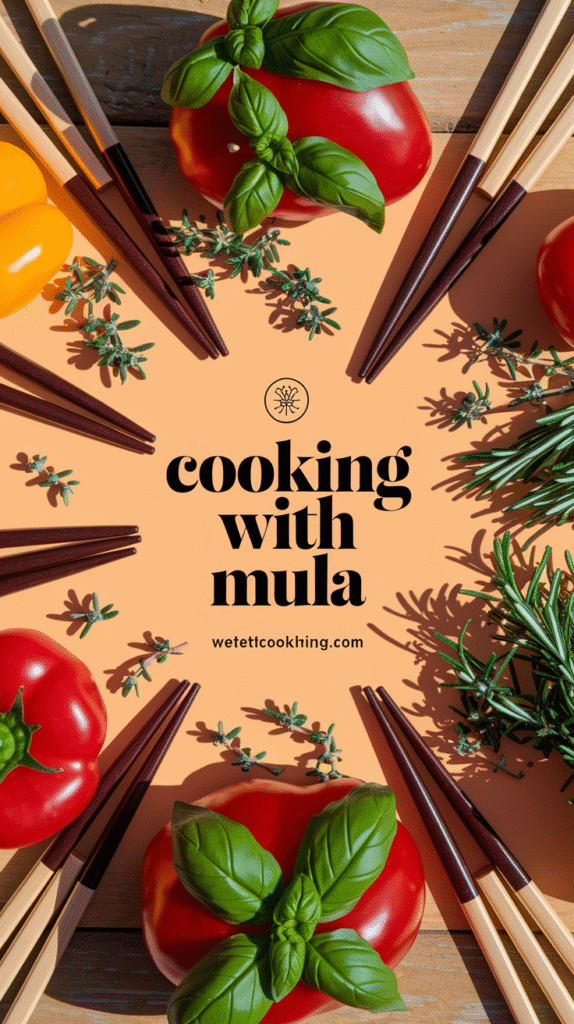If you’re looking to add some flair to your meals, cooking with mula can be a delightful choice. Mula, or radish, is not just a crunchy, peppery addition to salads; it can be a versatile ingredient in many dishes. Its vibrant flavor and unique texture can elevate everything from appetizers to main courses. Let’s explore some innovative recipes that make use of this underestimated vegetable.
Spicy Mula Salsa
Bring a fresh twist to your table with this spicy salsa that pairs excellently with chips, grilled meats, or as a topping for tacos.
- 1 cup diced mula (radish)
- 1 cup finely chopped tomatoes
- 1/2 cup chopped onion
- 1 jalapeño, diced (seeds removed for less heat)
- 1/4 cup cilantro, chopped
- Juice of 2 limes
- Salt to taste
Combine all the ingredients in a bowl. Mix well and let the flavors meld for at least 30 minutes in the fridge before serving. Enjoy with your favorite tortilla chips!
Radish and Avocado Toast
This trendy dish takes only minutes to prepare and is perfect for a quick breakfast or brunch option.
- 2 slices of whole-grain bread
- 1 ripe avocado
- 1/2 cup thinly sliced mula
- A sprinkle of sea salt
- Dash of chili flakes (optional)
Toast the bread to your liking. Mash the avocado and spread it generously on the toasted slices. Top with thinly sliced mula and add salt and chili flakes to taste.
Radish Stir-Fry
Stir-frying mula can bring a new dimension to your stir-fry dishes while adding delightful crunch and a slight peppery kick.
- 1 cup sliced mula
- 1 bell pepper, sliced
- 1 cup broccoli florets
- 2 tablespoons soy sauce
- 1 tablespoon sesame oil
- 2 cloves garlic, minced
In a wok, heat sesame oil over medium-high heat. Add garlic, followed by the sliced vegetables. Stir-fry until vibrant and tender. Pour soy sauce over the mix and toss everything together for 2 more minutes. Serve over rice or noodles for a complete meal!
Mula Salad with Citrus Dressing
This refreshing salad will brighten up any meal while packing a nutritious punch.
- 1 cup mixed greens
- 1 cup shredded mula
- 1 cup cucumber, sliced
- 1/2 cup carrots, grated
- Juice of 1 orange
- 1 tablespoon apple cider vinegar
- 2 tablespoons olive oil
- Salt and pepper to taste
In a large bowl, combine the mixed greens, shredded mula, cucumber, and carrots. In a small bowl, whisk together orange juice, apple cider vinegar, olive oil, salt, and pepper. Drizzle over the salad just before serving.
Pickled Mula
Pickling is another exciting way to enjoy mula. It adds a tangy flavor that’s perfect for sandwiches, tacos, or just as a snack.
- 2 cups sliced mula
- 1 cup vinegar (white or apple cider)
- 1 cup water
- 1 tablespoon sugar
- 1 tablespoon salt
- Optional spices (peppercorns, dill, garlic)
In a pot, combine vinegar, water, sugar, and salt. Bring to a boil. Place sliced mula in a jar and pour the boiling mixture over it. Seal the jar and let it cool. Once cooled, refrigerate for at least 24 hours before enjoying.
Cooking with mula opens up a world of flavors and textures. Whether you eat it raw, cooked, or pickled, its versatility can enhance any dish. For further exploration of mula recipes, check out Food Network for more inspiration.
Experimenting with mula enhances not just your creativity in the kitchen but also your palate! So next time you’re at the market, don’t overlook this vibrant vegetable. Embrace cooking with mula and discover its delicious possibilities!
The Nutritional Benefits of Mula in Your Diet
Mula, commonly known as radish, is a vibrant root vegetable that not only adds a crunchy texture and peppery flavor to your meals but also provides a wealth of nutritional benefits. mula into your diet is an easy way to enhance your overall health and well-being.
One of the key reasons to add mula to your meals is its impressive nutrient profile. Mula is low in calories, making it an excellent choice for those who are trying to maintain a healthy weight. A single cup of sliced raw radishes contains about 19 calories, while offering essential vitamins and minerals. Here are some of the nutritional highlights:
- Vitamin C: A cup of radishes supplies about 14% of the daily recommended intake of Vitamin C, which is essential for a robust immune system.
- Folate: Mula is a good source of folate, necessary for DNA synthesis and repair.
- Potassium: This mineral helps regulate blood pressure and supports muscle function.
- Antioxidants: Mula contains compounds like indoles and isothiocyanates that contribute to antioxidant defenses.
Beyond vitamins and minerals, mula is high in fiber, which can boost digestive health. Fiber helps maintain regular bowel movements and may reduce the risk of certain gastrointestinal issues. Additionally, it can provide a feeling of fullness, making it easier to manage portion sizes during meals.
Mula into your meals is simple. Here are a few delicious and creative ways to use radishes:
- Salads: Throw sliced radishes into a fresh green salad for crunch and spice.
- Pickles: Quick-pickle slices of radish in vinegar for a tangy condiment.
- Roasted Vegetable Medley: Pair roasted mula with other vegetables, like carrots and potatoes, to enhance flavors and textures.
- Soups: Add radish chunks to soups and stews for a unique twist.
Another remarkable aspect of mula is its hydrating properties. With a water content of about 95%, consuming radishes can help keep you hydrated, particularly during hot summer days. Staying hydrated is vital for overall health, as water aids in digestion, nutrient absorption, and circulation.
People suffering from respiratory issues may find mula particularly beneficial. Its natural compounds can help break down mucus, making it an excellent addition to dishes during cold and flu season. In some cultures, radish juice mixed with honey is a popular remedy for coughs and throat irritation.
Moreover, studies indicate that certain compounds found in radishes may help lower cholesterol levels and improve heart health. A heart-healthy diet that includes mula can! contribute significantly to maintaining a healthy cardiovascular system. Mula also supports liver function and detoxification by aiding in the elimination of toxins from the body.
| Nutrient | Amount per 100g |
|---|---|
| Calories | 16 |
| Vitamin C | 14 mg |
| Folate | 25 mcg |
| Potassium | 252 mg |
| Fiber | 1.5 g |
Mula into your dietary routine does not just enhance flavors; it also contributes significantly to your overall health. Whether you enjoy it raw, cooked, or pickled, the nutritional benefits of mula can support your body in multiple ways. For more information on healthy eating and the benefits of various foods, check out Healthline and Medical News Today.
Adding mula to your meals can elevate not only your nutrition but also your culinary experience. Embrace this earthy vegetable, and enjoy its many health benefits!
Cultural Significance of Mula in Global Cuisines
The humble mula or radish carries with it a flavor that transcends far beyond just taste; it holds cultural significance across various global cuisines. This root vegetable has woven itself into the fabric of many culinary traditions, contributing not just its crunchiness and zest, but also its history and identity in numerous societies.
In countries like India, mula is not just a vegetable; it symbolizes a seasonal delight. During the winter months, crispy white radishes are a staple in local dishes. The popular dish known as mooli paratha features grated radish mixed into flatbread, which showcases the versatility of mula in everyday meals. The juxtaposition of spices with the mild flavor of radish creates an unforgettable harmony on the plate.
Traveling to East Asia, specifically Japan, the cultural impact of the radish continues. The Japanese celebrate the daikon radish, a variety of mula, in various culinary forms. It is often pickled in tsukemono, served alongside rice, and featured in soups. This use reflects a broader appreciation of seasonal produce, as daikon is also believed to have health benefits, contributing to its esteem in Japanese culture.
The essence of mula extends to Western cultures as well. In European cuisines, particularly in France, radishes are often served raw, accompanied by butter and salt, as a simple yet elegant appetizer. This practice is steeped in tradition and underlines the French philosophy of savoring fresh ingredients at their peak. The iconic dish of radishes with butter highlights the importance of quality produce and simplicity in French gastronomy.
In the Middle East, mula’s significance can be found in salads and mezze platters. In places like Lebanon, the radish is often paired with fresh greens, pomegranate, and olives, creating vibrant and refreshing dishes that celebrate the region’s agricultural bounty. The variety in preparation emphasizes the adaptability of mula, making it a celebrated element of both everyday meals and festive occasions.
Across each of these cultures, mula not only adds flavor but also represents much more. It signifies sustainability, as it’s often grown in local gardens, fostering a connection between people and their food sources. Moreover, it acts as a cultural bridge, blending with various flavors and techniques while still retaining its distinct identity.
Here’s a quick look at how mula is appreciated in different cultures:
| Country | Culinary Use | Key Dishes |
|---|---|---|
| India | Stuffed in breads, salads | Mooli Paratha, Salad |
| Japan | Pickled, in soups | Daikon Tsukemono, Miso Soup |
| France | Raw, as an appetizer | Radishes with Butter |
| Lebanon | In salads, mezze | Fattoush, Mezze Platter |
When considering health, mula stands out as a nutritional powerhouse. It’s low in calories yet packed with essential vitamins and minerals. Its high fiber content aids digestion and may support weight management. These health benefits further contribute to its cultural significance, as food traditions often incorporate ingredients known for their health-promoting properties.
The global significance of mula shines through in the culinary practices of many cultures. It not only enhances dishes but also fosters a deep connection to the land and traditions. As you explore the world of cooking with mula, you not only experience its unique flavors but also engage with the rich stories behind this versatile root vegetable.
For those looking to deepen their knowledge of global cuisines, resources like Serious Eats and Food & Wine offer a plethora of information and recipes highlighting the culinary wonders of ingredients like mula.
Tips for Selecting and Storing Fresh Mula
When cooking with mula, it’s essential to start with the freshest ingredients. Mula, also known as radish, brings a crunchy texture and a peppery flavor to dishes. However, to fully enjoy its taste, knowing how to select and store fresh mula is key. Here are some tips to guide you in finding and preserving the best mula.
Choosing Fresh Mula
Selecting fresh mula can elevate your meals. Here are important traits to consider when shopping:
- Color: Look for bright, vibrant colors. Fresh mula should be white, red, or purple, depending on the variety. Avoid any that appear dull or discolored.
- Texture: Choose firm, crisp radishes. They should feel solid to the touch. Soft or spongy mula indicates aging or spoilage.
- Size: Opt for smaller to medium-sized radishes, which are generally more flavorful than larger ones. Big radishes may taste bitter and be woody inside.
- Leaves: If the mula has its greens attached, check their freshness. Bright green leaves signal that the radish is fresh. Avoid any with wilted or yellowing greens.
Storing Fresh Mula
Once you’ve selected your mula, proper storage is crucial to maintaining its freshness. Here are steps to keep your radishes crisp:
- Remove Greens: If your mula comes with leaves, it’s best to remove them before storage. The greens can draw moisture from the radish, causing it to become limp.
- Keep in a Cool Place: Store mula in a cool, dry area. The fridge’s vegetable crisper is ideal, as it provides a stable environment for preservation.
- Use a Plastic Bag: Place your cleaned mula in a perforated plastic bag. This allows circulation while retaining moisture, preventing the radish from drying out.
- Wet Paper Towels: Wrapping fresh radishes in a damp paper towel can help maintain humidity. Just be sure not to overdo it, as excess moisture can lead to rotting.
- Keep It Whole: If possible, avoid cutting your mula until you’re ready to use it. Whole radishes stay fresh longer compared to cut ones.
Perfect Storage Duration
Knowing how long you should keep your mula can help you plan your meals better. Here’s a quick reference:
| Storage Method | Duration |
|---|---|
| In the fridge (whole, with greens removed) | 1-2 weeks |
| In the pantry (cool, dry place) | 4-5 days |
| Cuts (in the fridge) | 2-4 days |
Cooking with Mula
Once you’ve picked and stored your mula correctly, it’s time to cook with it. Thanks to its versatility, mula can be enjoyed in various ways. Here are a few ideas:
- Salads: Add sliced mula for a delightful crunch in salads. Pair it with fresh greens, avocados, and vinaigrette for a refreshing meal.
- Soups: Mula can be diced and added to soups or stews, providing a unique flavor dimension. Consider incorporating it in Asian-inspired dishes like miso soup.
- Roasted: Roasting radishes can mellow their flavor while enhancing their sweetness. Toss them with olive oil, salt, and pepper, then roast until tender.
- Pickled: If you have an abundance of mula, try pickling them. This process keeps them fresh longer and adds a zesty kick to your meals.
By selecting the best mula and storing it correctly, you can enjoy this wonderful vegetable for longer. Ready to explore new flavors? For more recipes and tips on using fresh ingredients, visit Fine Cooking or check out Serious Eats for inspiring dishes. Happy cooking!
Creative Ways to Incorporate Mula into Everyday Meals
When it comes to cooking with mula, there are a multitude of creative ways to incorporate this leafy vegetable into your daily meals. Mula, also known as radish greens, is often overlooked, but it’s packed with nutrients and flavor. This versatile ingredient can enhance a variety of dishes, making them healthier and more delicious.
One of the easiest ways to use mula is to toss it into soups. Add chopped mula to your favorite vegetable or chicken soup during the last few minutes of cooking. This not only adds a nice texture but also contributes essential vitamins to the dish. You can also blend it into a creamy soup for a unique twist. For instance, try making a creamy radish green soup with potatoes, garlic, and a touch of cream for a comforting yet nutritious meal.
If you’re in the mood for something on the lighter side, consider sautéing mula as a side dish. Quickly sauté it in olive oil with garlic, salt, and a pinch of red pepper flakes for an invigorating flavor boost. This method helps maintain the greens’ color and nutrients while complementing any main course. Serve your sautéed mula alongside grilled chicken or fish for a perfect balance of flavors.
Another exciting way to enjoy mula is in salads. Fresh mula can provide a delightful crunch and peppery flavor. Simply wash and chop the greens, then mix them with other salad essentials like tomatoes, cucumbers, and carrots. A light vinaigrette with lemon juice and olive oil can brighten up the dish. For added protein, consider topping the salad with nuts, seeds, or grilled tofu.
For those adventurous in the kitchen, integrating mula into stir-fries is a fantastic option. Stir-frying allows you to experiment with various flavors and textures. Start by heating a small amount of oil in a pan, then add your choice of proteins, such as beef or shrimp, along with vegetables like bell peppers and broccoli. When everything is nearly cooked, toss in the washed and chopped mula. Stir-fry for an additional minute until the greens are just wilted, providing a delicious finish to the dish.
One of the most creative uses for mula is in smoothies. This may sound unusual, but incorporating the greens into your morning smoothie can elevate its nutritional profile. Blend together banana, yogurt, milk (or a dairy-free alternative), and a handful of mula for a refreshing start to your day. The sweetness of the banana and the creaminess of the yogurt can mask the slightly peppery taste of the greens.
Here’s a simple recipe to inspire you:
- Mula Smoothie:
- 1 banana
- 1 cup yogurt
- 1 cup milk (or dairy-free alternative)
- 1 handful of chopped mula
- 1 tablespoon honey (optional)
Blend all ingredients until smooth and enjoy!
Additionally, you can spice up your breakfast dishes by incorporating mula. Think beyond the traditional spinach and opt for radish greens in your omelets or frittatas. Simply sauté the mula with onions and bell peppers, then add beaten eggs and cook until set. This increases the nutritional value of your morning meal and adds a refreshing twist.
To further sustain your creativity, consider adding mula to rice or grain dishes. Cook your favorite grains, such as quinoa or brown rice, then fold in cooked mula for added flavor. Spice it up with seasonings like cumin or turmeric to add depth and enhance its aroma. A simple grain bowl topped with your favorite protein and fresh herbs can easily become a favorite meal.
For more ideas on integrating mula into your meals, explore resources like Love & Lemons and The Kitchn that provide tips and recipes for using radish greens. These sites can help expand your culinary repertoire and keep your meals exciting.
Being creative in the kitchen allows you to embrace the flavors and benefits of mula. From soups to smoothies, the possibilities are endless. So, step out of your comfort zone and start experimenting with this nourishing green. With a little creativity, cooking with mula can transform your everyday meals into something special!
Conclusion
Cooking with mula offers a delightful journey through innovative recipes, rich nutritional benefits, and cultural significance that spans across global cuisines. This versatile root vegetable not only enhances dishes with its unique flavor but also packs a punch when it comes to health. It’s a great source of vitamins, minerals, and antioxidants, making it a smart choice for those looking to nourish their bodies.
Selecting the freshest mula is crucial to enjoying its crisp texture and peppery taste. Remember to opt for firm, vibrant specimens while storing them properly to maintain their freshness. By doing so, you ensure that every meal is bursting with flavor. mula into your everyday cooking can transform even the simplest dishes into fun culinary experiences. Whether it’s adding shredded mula to salads, roasting it for a savory side, or utilizing it in soups and stews, the options are limitless.
As you explore the myriad ways of cooking with mula, you also tap into a tradition that resonates with many cultures. From Asian stir-fries to Middle Eastern dips, mula has found its place in diverse cuisines worldwide, celebrating its versatility and appeal. Embrace the opportunity to experiment with this nutritious root vegetable, and don’t shy away from trying new recipes! By including mula in your diet, you not only uplift your meals but also enrich your culinary repertoire. Happy cooking!







Leave a Reply